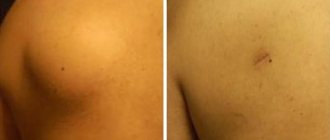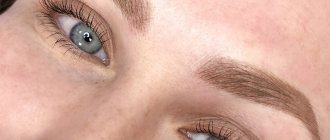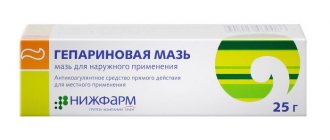What happens if you don't open the boil?
The resulting boil can be harmful to health if measures are not taken in time to remove the source of purulent inflammation. Opening a boil in medical institutions is a quick and simple process, but few people turn to a specialist. It is important to understand that a boil will not resolve on its own. But opening it up at home like an ordinary pimple is also unacceptable.
Inflammation occurs on the legs, in the armpits, in intimate places, and in any part of the body where hair follicles are present. It is dangerous to appear on the face near the nose and lips. If the abscess is not opened in time, there is a possibility of infection spreading through the blood. Staphylococcal infection causes diseases of the lungs, liver, and brain.
In the International Classification of Diseases (ICD-10), the boil has a special code (L02).
How they open it in a hospital
Surgery is necessary if the following symptoms appear:
- increased body temperature, weakness;
- pain, swelling;
- large size of the abscess.
Symptoms indicate the beginning of an internal inflammatory process, the boil begins to abscess.
Removal in the hospital takes place under local anesthesia. The site of the abscess is treated with an antiseptic. An incision is made with a scalpel, then the purulent core is removed. The wound is treated with a solution of hydrogen peroxide. A drainage (sterile rubber strip) is installed in the wound to remove pus. Due to anesthesia, a person experiences virtually no pain or discomfort. General anesthesia is not required.
Further treatment is prescribed by the doctor. Wound healing ointments and antibiotics are used to remove the seal. If the operation is performed correctly, there will be no relapse.
You can open it in a hospital using alternative methods:
- Ultrasound.
- UV radiation.
- Laser.
How to smear a boil before the procedure
After a preliminary examination, the doctor sets a time for the operation. To make the boil ripen, use Vishnevsky liniment or ichthyol ointment. The products have anti-inflammatory and antiseptic properties. The doctor will explain the rules of hygiene; during treatment, it is not advisable to visit saunas or take hot baths. You can wash in the shower.
No special care is required before surgery. If there is a need to perform an autopsy at home, make sure that the boil is mature and the stem is visible. Lubricate it with ointments daily (Levomekol, Vishnevsky), then the likelihood of spontaneous rupture will increase. It is important to treat the surrounding skin with an antiseptic so that staphylococcus does not get on healthy areas of the skin and cause boils to reappear.
How to properly perform an autopsy at home
It is not recommended to carry out the opening procedure yourself. There is a high probability of getting an infection and not completely removing the pus from the wound. A non-removed rod will lead to more severe complications. Self-squeezing is not recommended for the following reasons:
- spread of infection to other areas of the skin or the appearance of sepsis (more severe consequences);
- infection due to non-compliance with sanitary and hygienic requirements;
- development of complications in the form of furunculosis.
To open it at home, the following algorithm of actions is performed:
- Accelerate the process of abscess maturation. Vishnevsky or ichthyol ointment is applied to the site of suppuration. Warm compresses can be used. A heating pad or towel moistened with warm water is suitable for them. Compresses are changed regularly. The maturation process of the abscess will take about a week.
- The opening process. The affected area is treated with an antiseptic. Then the purulent head is pierced with sharp scissors or a needle. The needle or scissors are disinfected. The pus that leaks out is removed with sterile wipes.
- Removing the rod. It should come out along with pus and blood. If it remains inside, a relapse cannot be avoided.
- Wound healing. To prevent infection and infection, use antibacterial ointments. Sterile dressings are applied daily. After the wound stops festering, wound healing ointments can be used. Dressings need to be changed until the wound is completely healed.
A boil can break out without intervention. If it is clear that the abscess is almost ripe, you should prepare sterile bandages and napkins to treat the resulting wound.
You should not try to burst or squeeze out a boil in children. The child is shown to a doctor to prescribe further treatment.
Services
Opening of abscesses - a puncture, an incision of the abscess with a scalpel, followed by cleaning the wound.
An abscess is a formation on the skin and mucous membranes of various sizes and shapes with purulent contents.
At the “My Doctor” medical center, the following types of ulcers are opened:
- carbuncles
- boils
- acne
- abscesses
- hidradenitis
- panaritiums
- paronychia
- phlegmon
EXAMINATION BEFORE OPENING UPSURES
Express test for HIV, syphilis, hepatitis B, C (blood test is performed in our laboratory within 30 minutes).
Carbuncle is an acute purulent inflammation of the skin and subcutaneous tissue around several adjacent hair follicles and sebaceous glands. The opening of the carbuncle is carried out in case of necrosis (death) of tissue.
HOW IS THE CARBUNCLE OPENED?
The surgeon injects an anesthetic into the healthy tissue around the carbuncle. After 2-3 minutes. After anesthesia, a cross-shaped incision is made with a scalpel at the site of the formation, dead tissue is removed, and the leaks are opened. The wound is cleaned of pus and treated with an antiseptic.
After the procedure, an aseptic bandage is applied for 2 days. Until the tissues are completely healed, dressings are required every 1-2 days.
The duration of the procedure is 15-20 minutes.
A furuncle or boil is an acute purulent inflammation of the hair follicle, sebaceous gland and surrounding tissue with the formation of a rod. A furuncle, unlike a carbuncle, develops within the boundaries of one hair follicle. The boil is opened if the abscess grows in the subcutaneous tissue and prevents the rod from being rejected.
HOW IS THE OPENING OF A BOIL PERFORMED?
The surgeon injects an anesthetic into the healthy tissue around the boil. After 2-3 minutes. After anesthesia, the wall of the boil is pierced with a scalpel, and the rod is removed. The wound is cleaned of pus and treated with an antiseptic.
After the procedure, an aseptic dressing is applied. Dressings are required daily until the wound is completely healed.
The duration of the procedure is 15-20 minutes.
Acne is a purulent pimple that occurs due to blockage of the ducts of the sebaceous glands. Autopsy of the acne is performed for severe acne.
HOW IS THE OPTION OF AN EAL PERFORMED?
The surgeon injects an anesthetic into the healthy tissue around the acne. After 2-3 minutes. After anesthesia, the wall of the acne is pierced with a scalpel. The wound is cleaned of pus and treated with an antiseptic.
After the procedure, an aseptic dressing is applied. Until the tissues are completely healed, dressings are required every 1-2 days.
The duration of the procedure is 10-15 minutes.
An abscess is a purulent inflammation of the skin and subcutaneous tissue with the formation of an abscess.
HOW IS AN ABSCESS OPENED?
The surgeon injects an anesthetic into the healthy tissue around the abscess. After 2-3 minutes. After anesthesia, an incision is made over the abscess with a scalpel, the surgeon inserts a finger into the cavity of the abscess and destroys the walls of the chambers. A strip of gauze soaked in a special solution is inserted into the incision to drain the pus, and an aseptic bandage is applied.
The drainage is removed after 2 days. Repeated drainage is carried out as necessary until the pus is completely removed. Until the tissues are completely healed, dressings are required every 1-2 days.
The duration of the procedure is 25-30 minutes.
Hidradenitis is a purulent inflammation of the sweat glands.
HOW IS HYDRADENITIS OPENED?
The surgeon injects an anesthetic into the healthy tissue around the abscess. After 2-3 minutes. After anesthesia, a wide incision is made with a scalpel through the abscess to healthy tissue. The surgeon cleans out the pus and removes all infected fatty tissue. The wound is treated with an antiseptic.
After the procedure, an aseptic dressing is applied. Until the tissues are completely healed, dressings are required every 1-2 days.
The duration of the procedure is 25-30 minutes.
Panaritium is a purulent inflammation of the soft tissues and bones of the finger around the nail.
HOW IS THE OPTION OF A PANARICIUM PERFORMED?
The surgeon injects an anesthetic into the healthy tissue around the abscess. After 2-3 minutes. after anesthesia, the subcutaneous tissue of the finger is dissected with a scalpel. The wound is cleaned of pus and treated with an antiseptic.
The affected nail may need to be removed.
If necessary, drainage of the abscess is carried out - a strip of gauze soaked in a special solution is placed under the nail fold to drain the pus. The gauze is removed after 4-5 days.
After the procedure, an aseptic dressing is applied. Until the tissues are completely healed, dressings are required every 1-2 days.
The duration of the procedure is 15-20 minutes.
Paronychia is a purulent inflammation of the skin and tissues of the finger around the nail.
HOW IS THE OPTION OF PARONYCHIA PERFORMED?
The surgeon injects an anesthetic into the healthy tissue around the abscess. After 2-3 minutes. after anesthesia, the detached part of the nail is removed using surgical scissors - the nail fold is lifted from the nail, the scissors are inserted under the edge of the root and the detached part is removed. A strip of gauze soaked in a special solution is placed under the nail fold to drain the pus, and an aseptic bandage is applied.
The drainage is removed after 2-3 days. Repeated drainage is carried out as necessary until the pus is completely removed. Until the tissues are completely healed, dressings are required every 1-2 days.
The duration of the procedure is 25-30 minutes.
Cellulitis is an acute purulent inflammation of the skin and subcutaneous tissue with the formation of an abscess that does not have clear boundaries.
HOW TO OPEN PHLEGMON WITH A SCALPEL
The surgeon injects an anesthetic into the healthy tissue around the abscess. After 2-3 minutes. After anesthesia, an incision is made over the abscess using a scalpel, the cavity with pus is emptied and washed with an antiseptic solution. If necessary, a drainage is inserted into the incision to drain pus. An aseptic bandage is applied on top. The drainage is removed after the cavity is completely cleared of pus. Until the tissues are completely healed, dressings are required every 1-2 days.
The duration of the procedure is 25-30 minutes.
HOW IS RADIOSURGICAL OPENING OF PHLEGMON PERFORMED?
The surgeon injects an anesthetic into the healthy tissue around the abscess. After 2-3 minutes. After anesthesia, a non-contact incision is made over the abscess of the damaged tissue and cauterization of the vessels using the Surgitron apparatus. Using a special electrode resembling a thin wire, a beam of radio waves penetrates deep into the damaged area of tissue and evaporates it. The cavity with pus is emptied and washed with an antiseptic solution. If necessary, a drainage is inserted into the incision to drain pus. An aseptic bandage is applied on top. The drainage is removed after the cavity is completely cleared of pus. Until the tissues are completely healed, dressings are required every 1-2 days.
The duration of the procedure is 25-30 minutes.
During the operation, the Surgitron radiosurgical device simultaneously cuts, eliminates bleeding and disinfects the incision site, which is almost invisible.
TREATING UPRESSURES INDEPENDENTLY IS PROHIBITED
- the use of absorbable ointments without a surgeon’s prescription can provoke the spread of inflammation to neighboring tissues, lead to damage to internal organs and even sepsis - blood poisoning
- squeezing out the abscess also leads to the spread of inflammation to neighboring tissues, causing the disease to become chronic. And squeezing out acne in the nasolabial area can lead to meningitis, encephalitis, neuritis of the cranial nerves
Therefore, when an abscess passes into the stage of abscess and necrosis, it is important to contact a surgeon in a timely manner.
Processing after opening
Proper care of the wound after opening is the key to speedy healing and prevention of complications. If the removal took place in a hospital, the doctor will wash the wound with an antiseptic solution and apply a bandage. He will also give information about further processing and give a prescription for the ointment. If there are frequent relapses, antibiotics and vitamins may be prescribed and taken. It is important to increase immunity so that the body fights the bacteria itself.
You should not leave the cavity open, as an infection may get there and the inflammatory process will begin again. Change the bandage two to three times a day. Wipe off the ichor and ointment residues with a sterile napkin. You can wash the wound with an antiseptic: chlorhexidine or hydrogen peroxide. It is better to do this with a gauze swab. Keep the affected area clean and healed. Apply antibacterial ointment and apply a gauze bandage. But not tight so that the skin can breathe.
Sometimes a compaction remains at the site of the chiria. It is associated with improper removal of the rod. Then you need to consult a doctor so that he can remove the root from the hair follicle. It is necessary to smear the boil after opening with wound-healing and antibacterial ointments: tetracycline, hydrocortisone ointment, solcoseryl.
Let's talk in more detail about what contributes to the occurrence of this disease?
We have already mentioned that the immediate cause of a boil is an infection, namely staphylococcal.
We can also include damage to the skin - abrasions, cuts, scratches, scratches, abrasions - which contribute to the penetration of infection. We will also include lack of personal hygiene here.
Decreased immune status of the body due to hypothermia, or associated with vitamin deficiency, stress, diets, chronic diseases (diabetes mellitus, obesity, gastrointestinal diseases), taking certain medications, hormonal disorders.
How long does it take for a boil to heal after removal?
The healing time of the wound after removal of the boil is different for everyone, but on average it takes about a week. Healing depends on various factors, the size of the boil and the characteristics of the body. A boil that is not neglected or complicated heals quickly and does not cause complications. Regular application of special ointments and changing dressings will speed up the healing process.
Without the use of drugs and ointments, inflammation can recur and lead to multiple inflammation - furunculosis. At best, without proper treatment, you will be left with an unsightly scar.
Don’t be lazy and treat the wound for at least five days. If you use Levomekol, limit the use of the antibiotic to 5-6 days, but no more. It is important to prevent addiction to the components of the ointment. If necessary, replace it with the Rescuer.
Symptoms indicate healing:
- the affected area feels the same temperature as the rest of the skin;
- the dermis is smooth, without compactions and tubercles;
- the color does not differ from the rest of the skin, there is no redness;
- Painful sensations when touched disappeared.
If the area where the chiryak was removed begins to hurt or thickening of the skin appears, you should immediately inform your doctor.
How to make a diagnosis?
This disease occurs in three stages:
The 1st stage - infiltration - manifests itself in the form of redness, swelling, thickening of the tissues surrounding the hair follicle, which increase with each subsequent day. This process is most pronounced when the boil is localized in the facial area. The duration of this stage is up to 3 days.
Stage 2 – suppuration and necrosis, characterized by the appearance of a purulent core on days 3-4. Often the general condition of a person can be disturbed - pain intensifies, temperature rises, general weakness appears, headache bothers. If the outcome is favorable, after 2-3 days the purulent core is rejected, pus comes out, and a deep, moderately bleeding wound is formed.
The 3rd stage - healing - is manifested by the subsidence of all the above processes and the formation of a scar in this place ends.
We have analyzed the classic picture of the course of the disease. Symptoms largely depend on the location of the boil and on the individual characteristics of each person’s body.
Sometimes the picture may be erased, the formation of the rod does not occur. In case of complications, an abscess or soft tissue phlegmon is formed.
Complications, depending on location, are divided into:
- local (carbuncle, abscess, phlegmon),
- distant (lymphangitis, lymphadenitis, phlebitis),
- general (furunculosis, sepsis)
Why did the temperature rise after the procedure?
When getting rid of a boil in the hospital or at home, you can get some complications. The main sign of an incorrectly performed operation is the appearance of temperature. Usually body temperature rises to 37°C. Heat indicates the onset of inflammation. The attending physician will find out the cause of the inflammation and prescribe medication. In some cases, the wound will have to be reopened and cleaned.
After the procedure, carefully monitor your general health; any deviation (weakness, nausea, chills, temperature) should not be ignored.
Consequences of self-removal
It is not recommended to pierce, cut or squeeze the boil yourself. The consequences of these actions can be serious. At best, a scar will remain, which is unpleasant, especially on an open area of the body (face, neck, shoulders). At worst, complications may develop that will lead to long-term and unpleasant treatment.
Consequences of self-removal:
- Sepsis, abscess.
- Infection of the blood and other organs.
- Phlegmon.
- Chronic furunculosis.
You can avoid undesirable consequences only by contacting a surgeon or dermatologist; doctors will remove the boil without the risk of complications.
Cutting out a boil is not such a terrible thing as to sacrifice your health. The article has been verified by the editors
How to treat a boil so as not to harm your body?
The most correct recommendation would be to consult a doctor - surgeon or dermatologist, do not self-medicate . The doctor will make a diagnosis and prescribe the necessary treatment - conservative or surgical.
Conservative treatment is possible only at the first stage of the disease.
The main method of treating a boil is surgical . Only timely opening of the abscess, ensuring the outflow of purulent contents, followed by drainage of the wound will lead to success.
The opening and drainage of the boil in our clinic is performed under local anesthesia (lidocaine, ultracaine, novocaine) and for the patient this procedure is painless and is performed on an outpatient basis.
Qualified surgeons at ACMD-MEDOX will help you cope with surgical troubles. Contact us, we will be happy to help!










